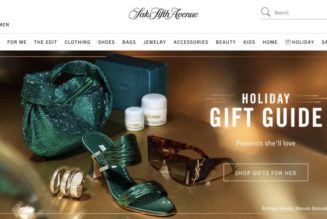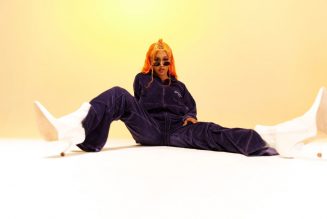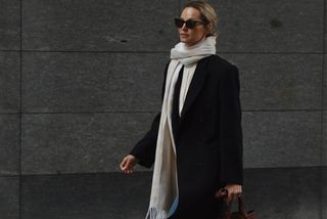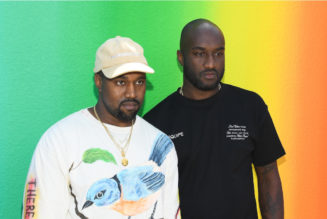
Conventional wisdom holds that when the economy flounders, the well-heeled don’t skip a beat and keep spending while everyone else cuts corners and pulls back.
But early indications are that when, rather than if, the economy falters, the high-earning affluent will share in the pain. And their pain will roll over onto the luxury brands that depend upon their spending largesse.
Wall Street Journal’s Justin Lahart calls it a ‘richcession,’ where the affluent few will feel more disruption than the mass-market many, who will be shielded by a robust job market.
On the other hand, layoffs are starting to strike higher-earning professional workers and the places they park their wealth, like the stock and housing markets, are under pressure.
“Heading into the new year, businesses that cater to the well-off might be in for disappointment, while those that favor the hoi polloi over the hoity-toity might do better,” Lahart wrote.
Brakes On At End Of Year
During the last quarter of the year, when sales should be booming, many luxury brands saw their sales slow or even decline, providing a fair warning of the ‘richcession’ to come.
LVMH, the industry’s pacesetter and market-share leader generating $86 billion last year, experienced a slowdown during the fourth quarter, with organic revenues up only 9%, after double-digit increases in the ~20% range during the first three quarters.
Gucci-owner Kering, the industry’s number two but far behind with $21.8 billion in revenues last year, experienced an 8% drop in comparable sales in fourth quarter, including a 15% decline in North America and a 19% cut in Asia Pacific from previous year.
The Estée Lauder Companies
During its peak selling season, Canada Goose revenues dropped 1.6% from previous year. And Ralph Lauren inched up 1%, but sales slowed from 8% and 5% increases in its two preceding quarters.
On the retail front, Nordstrom
Neiman Marcus and Saks Fifth Avenue are shielded behind private ownership, but both recently announced layoffs, never a good sign.
Luxury/Premium Spending To Be Cut Most
Looking out over the next six months, a new study from PwC predicts more of the same or worse may be headed for luxury brands. Its Global Consumer Insights Pulse Survey, measuring over 9,000 consumers across 25 markets, found that the luxury/premium sectors will take the brunt of a spending slowdown.
Finding that 53% of consumers are holding back on non-essential spending, with luxury being the most non-essential of all, PwC reports that 96% of all surveyed consumers intend to make some adjustments to their spending habits.
In particular, the survey finds 53% of consumers plan to reduce their spending on luxury/premium or designer products. Mainstream fashion clothing and footwear purchases are also targeted for reduced spending by 41% of consumers, and travel is eyed for cuts by 43%.
“The cost-of-living crisis is having a material impact on how consumers purchase, both in-store and online,” said Sabine Durand-Hayes, PwC’s global consumer market leader, in a statement. “As prices rise, consumers globally are cutting back on non-essential spending, while spending more time looking for cheaper alternatives.”
Making The Cognitive Switch
Cheap prices are the last thing consumers expect to find when shopping luxury, but even if they are prepared to pay more, they may be surprised at how far luxury prices have risen over the past few years.
“For all top tier luxury brands and groups, a major portion of the growth in 2022 has come from strong pricing, and much less from like-for-like volume growth,” Milton Pedraza of The Luxury Institute shared with me.
“Even HNW (high-net-worth) and UHNW (ultra-high-net-worth) consumers tell the Luxury Institute that continuing to increase prices for the same products has its limits. We expect growth to be subdued for most of the luxury industry in 2023 and recovery in 2024,” he continued.
Stephen Rogers, managing director of the Deloitte Insights Consumer Industry Center, explained the psychological mechanism at work – called cognitive switching.
It is activated when prices exceed the acceptable ranges that people carry around in their heads. Consumers are then forced to do the mental calculus to determine whether to pay up, switch to a lower-priced alternative or do without. Even affluent consumers who can pay the price may be reluctant to do so.
“Lower-income consumers make these trade-offs, trade downs and switches all the time for financial reasons. But high-income consumers are not immune to making the same switches, but for different reasons,” he said.
“If consumers believe that companies are pricing unfairly, luxury brands could bump up against a cognitive switch where the high-income consumers are not willing to go, even if they can afford to pay the higher price.”
Intrinsic and extrinsic factors will both factor into the ‘richcession.’ The affluent have largely had their pandemic-fueled pentup demand for personal luxury satisfied over the past two years, with the market rising 32% from 2020 to 2021 and another 22% from 2021 to 2022, according to Bain-Altagamma.
And given the current economic environment, they may be more than willing to turn their purchase switch off until the turbulence subsides.









